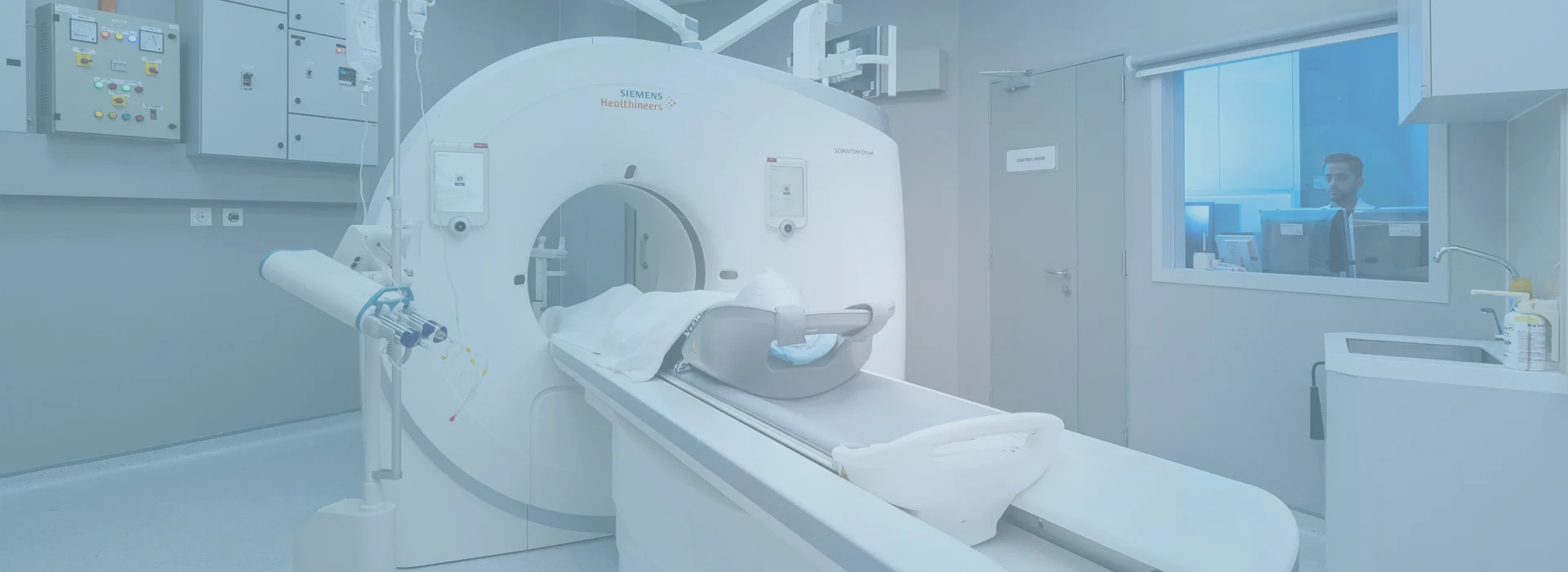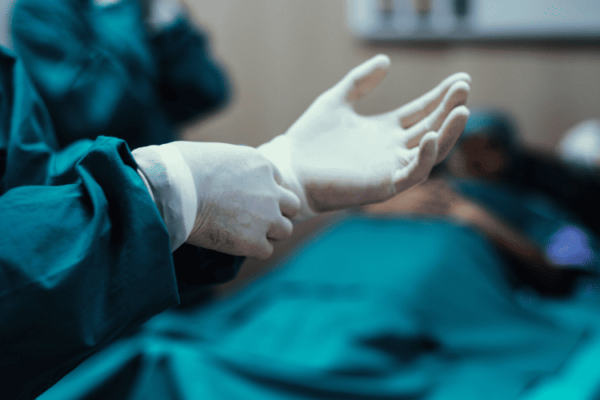
06 Dec Understanding Stroke: Time is of the Essence
Understanding Stroke: Time is of the Essence
By Island Hospital | Oct 23, 2024 4:11:06 PM
On a family vacation in Bogor, Jonathan*, 52, suffered a massive stroke but refused to be taken to the hospital by his wife only until much too late.
The next few days were filled with hospital arrangements, consultations with doctors there, and the logistics of getting him home which weighed down on his wife.
She had a business to run, 4 children below 19 years old, and not much time to think about the longer-term implications of Jonathan’s stroke.
This process of adjusting to a new way of life to cater for Jonathan’s needs only kicked start after they went back to Jakarta, where he spent a month in the hospital and then three months at the rehabilitation centre.
He had lost all ability to speak, write, or even gesture to show his needs.
Stories like Jonathan’s are all too common among our stroke patients.
Each day, we see families grappling with similar sudden, life-altering events.
In this article, we’ll take a closer look at the causes, symptoms, risk factors, and management of this condition, understanding how immediate action can make all the difference.
*not his actual name.
What is Stroke?
Stroke is a devastating illness resulting in death or significant disabilities in survivors, and the 3rd leading cause of death in many countries.
What is the Cause of Stroke?
Stroke is a disruption of brain function caused by blocked blood vessels or bleeding in the brain (bleeding in the brain, caused by trauma, like from an injury, is not considered a stroke).
Did you know 1 in 5 people may develop dementia within a year of having a stroke? Learn more about how stroke can lead to dementia.
Symptoms
Stroke results in symptoms such as:
- weakness or numbness in one or more limbs
- a droop on 1 side of the face
- difficulty lifting 1 arm to its full height
- slurred speech or inability to speak / understand
- visual disturbance (seeing double, sudden blindness in one eye),
- vertigo
- unsteady gait or difficulty walking
- unconsciousness and may result in death
However, bear in mind that there may be other symptoms as well.
Irreversible Risk Factors
The risk of stroke is higher in:
- males,
- older adults. and
- certain genetic constituents (race)
The risk of developing a stroke may be reduced significantly by:
- lifestyle modification,
- appropriate medication and in some cases,
- surgery (of selected neck arteries leading to the brain).
Modifiable Risk Factors
There are, however, many modifiable risk factors; favourably modifying these risk factors reduces the chance of suffering a stroke.
Such modification includes proper control (if present) of:
- hypertension (persistent high blood pressure),
- diabetes mellitus (high blood sugar levels over a prolonged period),
- high blood lipids (high level of LDL (low-density lipoprotein) cholesterol and/or triglycerides),
smoking, and - low level of physical activities.
Consumption of specific drugs which inhibit ease of blood clot formation like aspirin, clopidogrel, or warfarin has been proven to reduce stroke incidence and recurrence in appropriately selected patients.
These drugs may have risks and should only be used under the supervision of a doctor. There are also newer drugs now, to ease the symptoms.
Looking for more ways to reduce your risk? Read our article on how to prevent heart disease and embrace a heart-conscious lifestyle.
Steps to Take When Someone Has Stroke
Do the FAST test and note the time when you see these symptoms (1 to 3).
- FACE: Ask the person to smile. Does one side of the face droop?
- ARMS: Ask the person to raise both arms. Does one arm drift downward?
- SPEECH: Ask the person to repeat a simple phrase. Is their speech slurred or strange?
- TIME: If you observe any of these signs, call the Hospital Emergency Hotline.
Even if symptoms vanish quickly, call for help.
Warning signs may last only for a few minutes before they disappear. These brief episodes are transient ischemic attacks (TIA) or “mini-strokes.”
TIAs should be taken seriously because they tend to be signs of underlying serious conditions, and those with TIA are definitely at higher risk of having a subsequent stroke.
Therefore, they need to be checked and managed by a doctor.
Management of Stroke
First Step: Diagnosis
The leading step in the correct management of a patient with suspected stroke is to get the diagnosis correct. This will involve the doctor examining the patient and possible further tests like:
- blood evaluation,
- a chest X-ray, and
- brain scan – CT (computerised tomographic) scan or MRI (magnetic resonance imaging).
The initial diagnosis of stroke by the attending doctor is often a clinical diagnosis supported by brain scan findings (ideally a cranial MRI).
Next Steps: Treatment and Rehabilitation
Once the diagnosis of stroke is determined, treatment in the early initial stage often requires hospital admission. Time is of the essence.
“Clot busters” (in the form of “tPA” – tissue plasminogen activator) may be used to treat stroke if the cause of stroke is a blocked blood vessel in the brain and the patient’s scenario satisfies stringent criteria including initiation of treatment within 4.5 hours of first symptoms of stroke.
This treatment is not without risk, and in general, only a minority of all ischaemic stroke patients will qualify for such treatment.
If the stroke is due to the bleeding in the brain, the cause, often being hypertension and less often rupture of abnormal blood vessels in the brain that the patient is born with, effective treatment involves appropriate control of blood pressure and possible surgical evacuation of the blood clot (or other neurosurgical procedures as determined on a case-by-case need).
Besides treatment with drugs and by surgery, the treatment of stroke involves proper rehabilitation, including:
- physiotherapy,
- occupational therapy,
- and speech therapy (in patients with speech disruption caused by the stroke.)
Helping the patient and family, care-givers, and loved ones to understand and cope with the “calamity” of stroke is equally important.
Take Action Before It’s Too Late
Jonathan’s wife wishes she had insisted, despite his objections, to get him treated before it was this late.
Through the encouragement of his doctor, caregivers and family, Jonathan stepped out of depression from such a debilitating disease, gained strength to adhere to his treatment plan, and saw progress.
However, it is true for a stroke patient like Jonathan and his family, life will never be the same again.
He went on to regain some speech function over the years which was a big comfort to his family.
Jonathan’s story underscores why we at Island Hospital emphasise comprehensive heart care.
Our Cardiology Department and Heart Centre combine advanced technology with a dedicated team of professional cardiologists, nurses, and support staff to provide the highest level of care.
Our commitment to excellence has earned us local and worldwide recognition:
- A finalist for Malaysia’s Flagship Medical Tourism Hospital Programme
- A place on Newsweek’s lists of World’s Best Hospitals 2024
- A place Best Specialized Hospitals Asia Pacific 2024 (Cardiology).
Whether you are seeking preventive care, diagnostic services, or advanced treatments for heart-related conditions, Island Hospital stands ready as your trusted partner.
Don’t wait until it’s too late – Book an appointment today.






![[IH 2025] #33 ECG Test_Image 1 medical-machine-ecg-test](https://islandhospital.com/wp-content/uploads/2025/07/IH-2025-33-ECG-Test_Image-1-600x400.png)
